
Employee attrition refers to staff members who leave a company.
Retaining staff has become an ongoing issue in recent years, with more than 3.98 million workers quitting their jobs each month.
In this blog post, we dive into what causes employee attrition, how to reduce employee turnover and absenteeism, and strategies to help.
What Causes Poor Employee Attrition
Typically, when human resources (HR) leaders talk about this employee attrition, they are referring to those who leave the company to join a different employer, rather than those who simply retire or stop working.
There are several reasons why employees look for a new job.
Some are due to factors that are outside the employer’s control. But, mainly the causes of poor employee retention are things that can be avoided and prevented.
Based on our research, common reasons for a high employee attrition rate include:
- Poor compensation
- Poor benefits
- Lack of paid time off (i.e., sick time, vacation)
- Poor working relationships between coworkers
- Bad working relationships between workers and their supervisors
- Job security fears
- Sub-par work-life balance
- Industry changes
- Regulation changes
Whatever the reason, the cost of losing good employees is high. For context, it costs companies an average of 33% of an employee’s yearly salary for their exit.
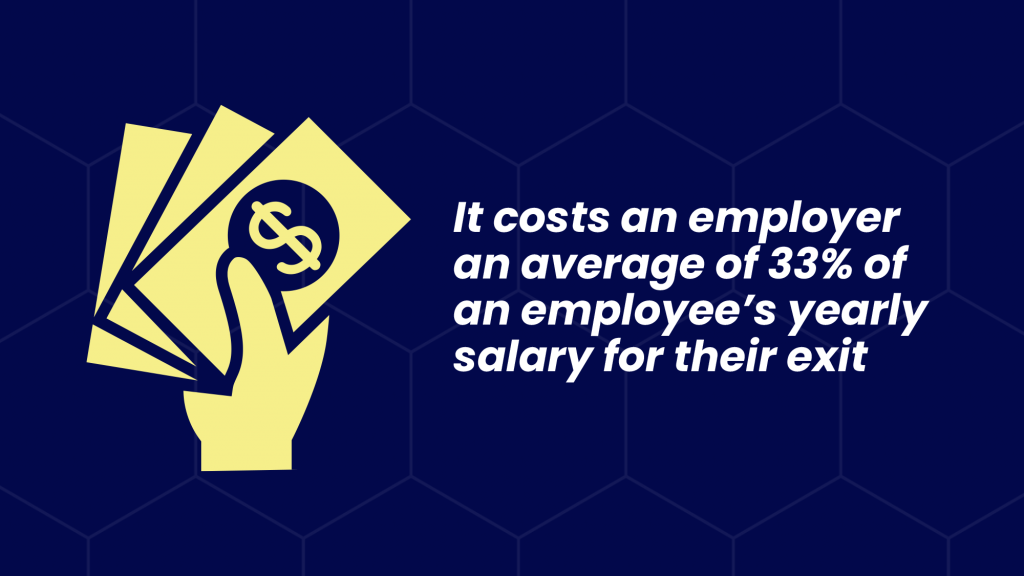
Why It’s important to Minimize Attrition
Minimizing employee attrition is crucial for several reasons. Firstly, it ensures stability within the workforce, fostering a sense of continuity and reliability within the organization.
High turnover rates can disrupt workflow, leading to decreased productivity and increased costs associated with recruitment and training.
Moreover, retaining experienced employees preserves valuable institutional knowledge, preventing its loss due to frequent turnover.
Secondly, low attrition rates contribute to a positive work culture and employee morale. When employees feel secure in their roles and see opportunities for growth and advancement within the company, they are more likely to be engaged, motivated, and loyal.
This, in turn, enhances overall performance, innovation, and customer satisfaction, ultimately contributing to the long-term success and sustainability of the organization.
Strategies to Reduce Attrition of Employees
1. Employee Surveys
Leadership teams and human resource representatives often have assumptions about why employee retention is low, but an employee survey is the best vehicle for identifying the exact causes.
When surveying employees, organization leaders can specifically design a custom questionnaire that helps them achieve their unique goals and objectives.
For instance, when searching online for ways to reduce employee attrition, you’ll find many of the strategies are very generalized.
They’ll tell you your low retention rates could be due to your lack of communication, intimidating company culture, no room for growth, or other common pain points.
While these are good starting points, the answer to why staff members are leaving your specific organization can only be found by conducting surveys using an employee survey company.
Common key performance indicators (KPIs) for an employee survey may include:
- Rating the importance of specific job-related factors
- Employee net promoter score (eNPS)
- Reasoning for eNPS
- Word association(s) about the organization
- How satisfaction has changed at the workplace in the past 12 months
- Comparison to other employers in similar industries (i.e., previous jobs)
- Employee benchmarking questions
- Any other custom-created question or question set based on the goals and objectives of the organization
For further proof to the power of employee surveys, studies show, there is a 16% decrease in retention rates for employees who aren’t comfortable giving upward feedback.
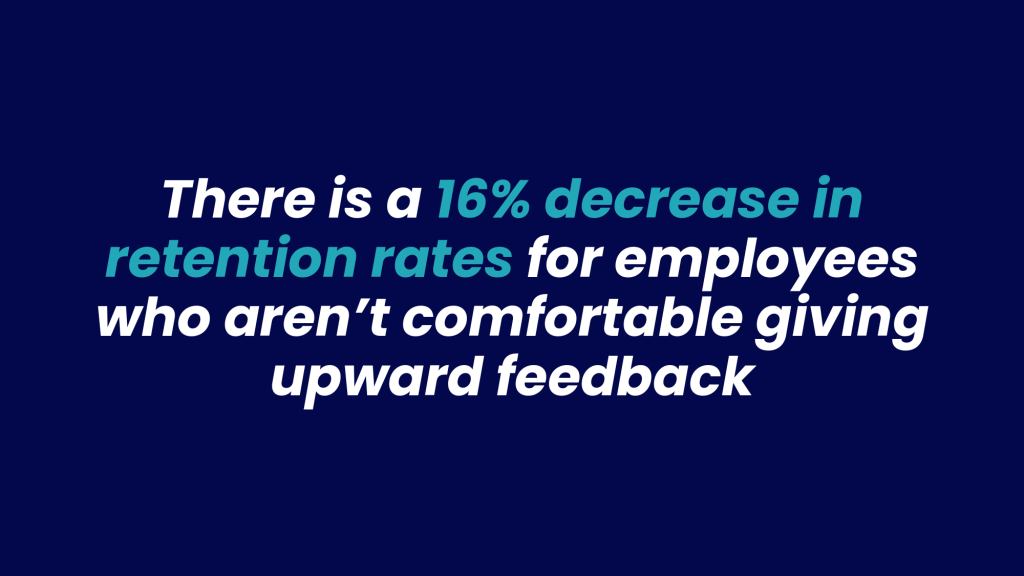
2. Don’t Rely on Hearsay
All successful organizations set up ways for employees to bond with one another.
It could be through daily IMs, lunchroom conversations, or happy hours.
Unfortunately, when it comes to why an employee leaves an organization it is often hearsay and unreliable sources.
Someone says one thing, that gets passed to another, and by the time (or if it makes it to HR), it’s gone through 14 cycles of the game of telephone.
In fact, studies show that 75% of professionals admit to gossiping about workplace concerns or coworkers.
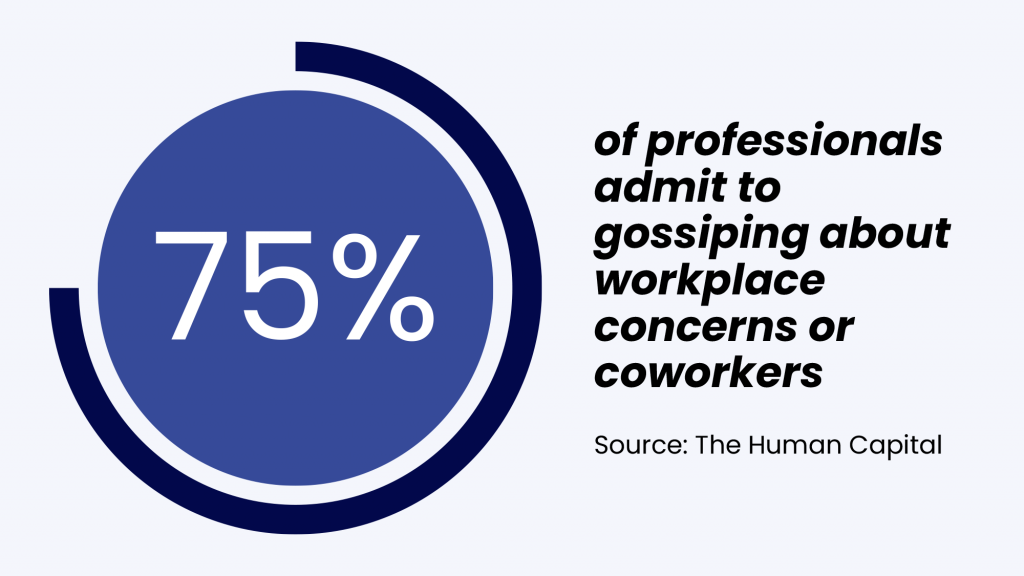
If you make changes to your culture based on this hearsay strategy, your change management method will likely be based on inaccurate drivers to employee attrition.
On top of that, making decisions to change policies on one-off cases (i.e., Pam left because she wanted more vacation time) is not a good strategy, either.
Through a more controlled outreach like a survey, you may find that 99% of your employees are already happy with the vacation policy.
So, adding 3 additional days of personal time because of Pam was unneeded.
Getting a true measure of your organization’s differentiators and improvement areas is crucial to reducing employee attrition.
- It’s not about what you or your management team thinks is the reason people are leaving your organization. ❌
- It’s about getting to the source to uncover those problems, quantity them, and make corrections. ✅
In short, make sure you understand the true reason behind employees that leave your company.
Going off of what others tell you isn’t often accurate, and can lead to additional misunderstandings in the workplace.
3. Ensure Employees Feel Heard
The only thing worse than not reaching out to your employees to collect feedback is reaching out and doing nothing with the feedback to make changes
Therefore, ensuring employees feel heard is a crucial second step after an employee survey project is complete.
This discussion should thank all who took the time to offer feedback and share a few high-level findings.
Sending a follow-up email helps…
- Communicate that the employer is appreciative of feedback
- Prove their feedback is both heard and acknowledged
- Shows actions for change are coming
- Set the tone for leadership effectiveness
All of which help cut down on the employee attrition rate.
Keep in mind, findings can seem long and too in-depth for someone who was not close to the study.
It’s why many employee survey reports include an infographic.
Adding an element of data visualization is great for showcasing key results or highlights from the study.
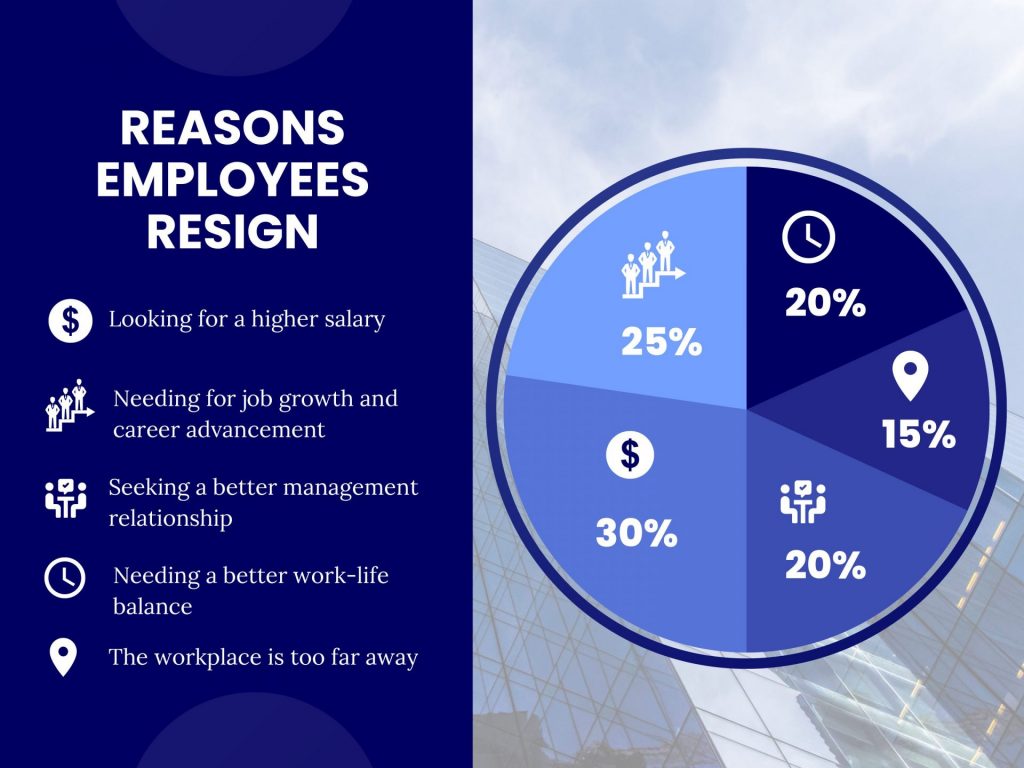
In similar employee survey studies conducted by our team, clients have adapted the infographic to make it shareable across all employees.
It is sent alongside a thank you email to all employees featuring a few of the key findings and how the results will be implemented in the future.
It is also important to reaffirm the results were confidential and reported in aggregate.
4. Discuss Compensation and Benefits
In some organizations, supervisors work with their teams to develop smart and measurable goals.
This may include:
- Company revenue goals
- Key performance indicators (KPIs) for the specific position
- Tracking the progress of other tasks/responsibilities
The supervisor and employee need to discuss these criteria and come to a decision on creating engaging goals and how it relates to potential compensation increases or bonuses.
For example, creating a company revenue goal, sometimes referred to as profit sharing, can be a great way to build performance bonuses for the whole team.
This solidifies teamwork and rewards the entire team when the company does well. This type of comradery is great for reducing employee attrition.
In fact, 54% of employees say a strong sense of community, such as a common mission, kept them at a company longer than was in their best interest.
Other benefits to discuss and potentially customize for employees may include:
- Offering a flexible schedule
- Unlimited paid time off
- Healthcare insurance
- Dental insurance
- Vision insurance
- Life insurance
- Retirement accounts with a company match
- Paid parental leave
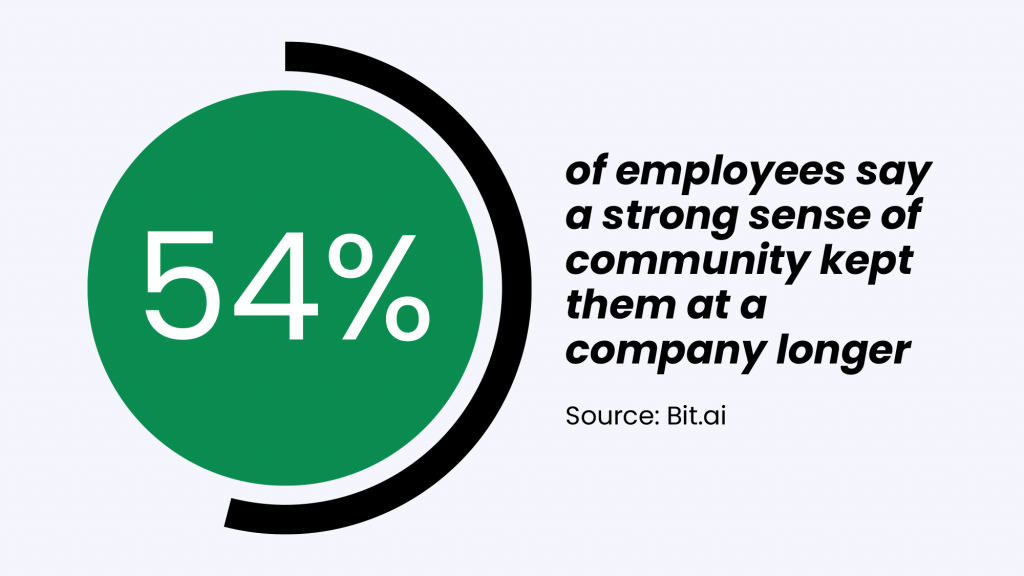
5. Keep Employee Engagement Top of Mind
Employee engagement and satisfaction is a great indicator of someone being fulfilled and happy in their current role.
Tips to improve employee engagement include:
- Focusing on engagement throughout the entire organization
- Selecting the right managers
- Coaching leadership and holding them accountable for employee engagement
- Defining employee engagement for the organization in realistic, everyday terms
Additionally, research studies show a strong correlation between employee engagement and client satisfaction.
In fact, Gallup found organizations with highly engaged and satisfied employees outperform other businesses in customer loyalty/engagement, profitability, and productivity.
Recommended Reading: Mental Health in the Workplace – Tips for Happier Employees
6. Promote Healthy Communication
Did you know, companies and organizations that communicate effectively are 4.5x more likely to retain the best employees?
It’s why many attrition reduction strategies center around open communication.
Suggestions to optimize communication between employees and leaders include:
- Defining expectations for individual employees and teams
- Defining outstanding performance
- Discussing ways employee work aligns with the organization as a whole
- Frequently providing formal and informal feedback to help employees reach goals
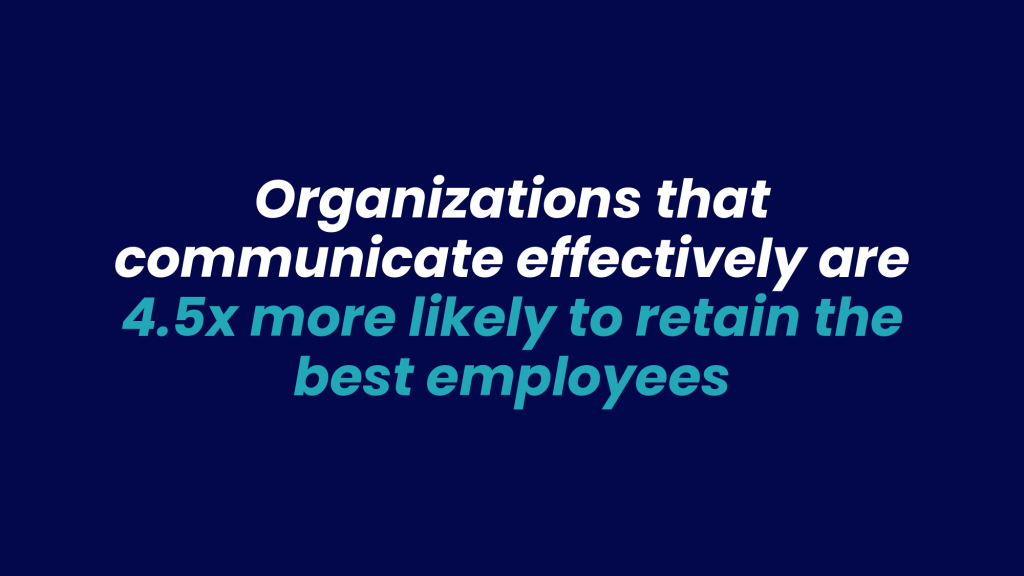
7. Discuss the Company’s Future (and Often)
Another study by Gallup revealed that 22% of employees strongly agreed organization leadership had a clear vision for the future.
This vision made 15% of employees excited to be a part of that plan.
Therefore when looking for ways to reduce employee attrition, be sure leadership teams are instilling confidence and trust that the business can offer great opportunities for the future.
Doing so makes team members more likely to stay committed to the organization.
Suggestions to improve trust between employees and leaders include:
- Create a compelling and authentic employer brand
- Use employee engagement surveys as a critical source of improvement
- Motivate employees through performance management
- Improve retention by customizing benefits to the unique needs of employees
- Allow employees to work from locations besides the office
- Encourage collaboration by creating custom workspaces that also honor privacy
- Streamline communication for employees who work on multiple teams/departments
Most importantly, let your team know you value their role in future plans for the organization so they are more committed to staying at their jobs.
8. Prioritize Professional Development
In addition to the company’s future, employees want to feel confident in their own professional growth.
A workplace survey report found that 94% of surveyed employees responded that if a company invested in helping them learn, they would stay longer.
Professional development is most impactful when…
- Employees have a say on how the organization and its managers set goals
- Evaluate progress to meet those goals
- Create training/professional growth opportunities
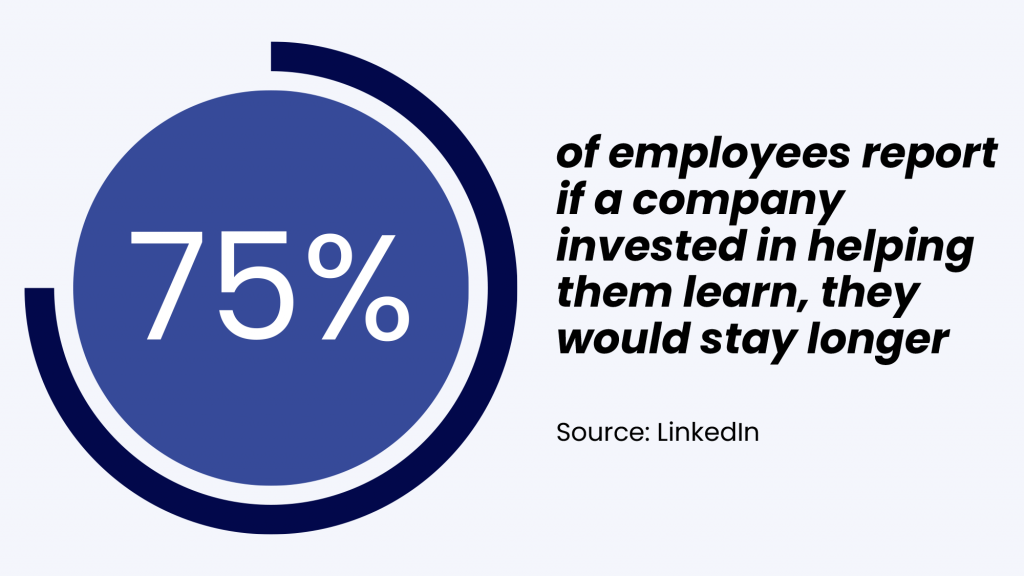
Job growth and advancements can take many forms.
For instance, finding a better way to do a job, taking on additional responsibilities, mentoring other team members, and learning a new skill are all examples of how to improve professional development growth within your organization.
Consider how progress in a role distinguishes a career from employment that is “just a job.”
Suggestions to foster employees’ professional growth include:
- Finding ways to challenge employees in positive ways
- Assessing current employees’ capabilities and looking for ways to align those their aspirations
- Co-develop short-term goals to achieve long-term goals
- Creating learning opportunities for each employee that are relevant to a larger, individual development plan
- Frequently checking in on employee improvement
- Discussing learning opportunities for professional growth
All of these suggestions will help employees understand how their roles support the organization as a whole and see value in new opportunities or responsibilities at the organization.
Additionally, when creating goals, it’s important the supervisor aligns employee goals with what motivates that particular employee (i.e., consider the types of jobs/projects, specific clients, tasks, and responsibilities each employee enjoys the most).
9. Shift to a More Flexible Mindset
There are so many workplace buzzwords such as ‘the great resignation‘ and ‘quiet quitting‘ coming to light.
Each of these has taken off post-pandemic. That’s because COVID-19 forced both employers and employees to reshape how they worked.
Many employees were able to take advantage of flexible work environments that provided benefits such as reduced stress, more time with loved ones, less time and money spent on commuting, and more.
However, now that we’re living in the “new norm” it begs the question – should employers still offer hybrid or fully remote workplaces?
Companies demanding employees work in person at an office are likely to see higher employee attrition rates.
In fact, 64% of workers would consider quitting if asked to return to the office full-time.
While 100% remote work might not be a viable option for every business and industry, it is still important to remain flexible.
Whether it be offering organizational strategies to promote work-life balance or readjusting your time-off policy for more vacation days, making changes to adjust changing times goes a long way in reducing employee attrition.
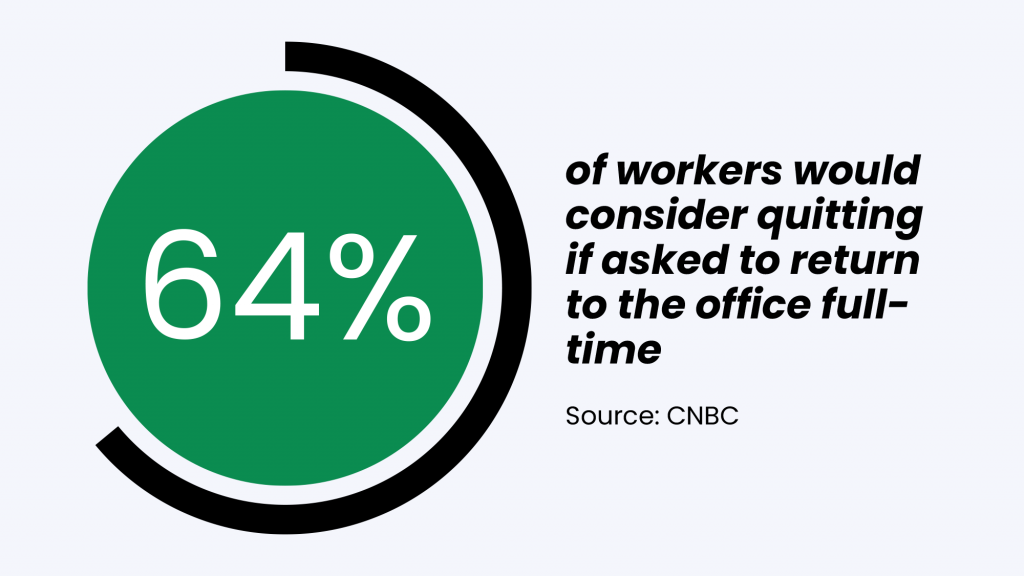
10. Evaluate Feedback From Employee Exit Interviews
Before someone leaves an organization, employee interviews typically take place with a human resources representative.
These meetings usually take between 30 to 60 minutes and cover a variety of topics, such as:
- The primary reason the employee is leaving
- Thoughts on what the company does well
- Thoughts on what the company could do to improve employee satisfaction
Taking the time to understand and make note of their feedback is a great initiative for reducing employee attrition. Here you will be able to pick up on common themes as to why employees are quitting – and if they are preventable or not.
Consider using a third-party market research company such as Drive Research, to conduct an employee exit survey in addition to the interviews with HR.
Doing so will lead to better results knowing there is reduced response bias.
For example, the employee will be sharing their feedback directly on an anonymous forum rather than the employer’s human resources representative.
Contact Our Employee Survey Company
Ready to conduct an employee survey and improve attrition rates within your organization?
Drive Research is a full-service market research company with the experience and tools needed to help walk you through the process of getting employee surveys done right.
Our team of market research professionals will help you come up with effective employee retention strategies.
Curious about our other market research services? Reach out today.



